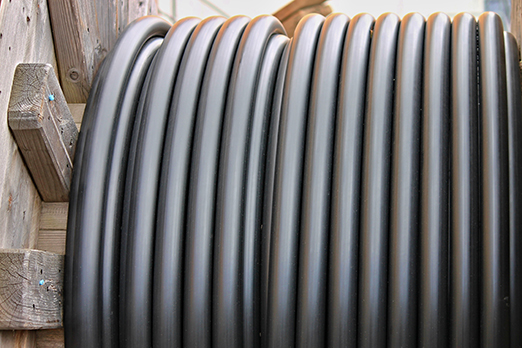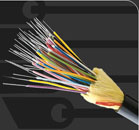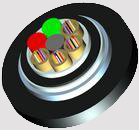PRODUCTS
- Aerial Bundled Cables
- Airport Cables
- Automotive Cables
- Alarm & Audio & Electronic Cables
- Belden Equivalent Cables
- Bus Cables
- Cable Glands
- Cables for Oil Industry
- Coaxial Cables
- Composite Cables
- Control Cables
- Data Cable
- Elevator Cables
- Fiber Optic Cables
- Fire Resisting Cable(Fireflix)
- Fire Retardant Cable(FIRETOX)
- Flame Retardant Cable (FIREGUARD)
- Flexible Cables
- Heat Detection Cables
- High Temperature Cables
- Highway Cables
- Industrial Cables
- Instrumentation Cables
- Lan Cables
- Marine Cable
- NEK606 Water Blocked Offshore & Marine Cables
- IEC60092 STANDARD Offshore & Marine Cables
- BS 6883&BS7917 STANDARD Offshore & Marine Cables
- UKOOA Offshore & Marine cables
- VG 95218 Navy Cables
- Mining Cables
- Airframe Wire
- Marine, OIL,GAS & Petrochemical Cables
- Power Cables
- Railway Cables
- Robotics
- Rolling Stock Cables
- Rubber & Crane Cables
- Security Cables
- Special Cables
- Spiral Cables
- Telephone Cables
- Thermocouple Cables
- BS 5308 Cable
- PAS 5308 Cable
- BS 5467 Cable
- BS 6724 Cable
- BS 6346 Cable
- BS 7211 Cable
- IEC 60502-1 Cable
HOT PRODUCTS
APPLICATIONS
![]() Cable Testing & Fire Resistant Cable
Cable Testing & Fire Resistant Cable
![]() Emission of Smoke, Halogens and Toxicity Testing
Emission of Smoke, Halogens and Toxicity Testing
![]() IEC60754-1/BS6425- 1 (Emission Of Halogens)
IEC60754-1/BS6425- 1 (Emission Of Halogens)
This specifies a test for determination of the amount of halogen acid gas, other than the hydrofluoric acid, evolve d during combustion of compound based on halogenated polymers and compounds containing halogenated additives taken from cable constructions. Halogen includes Florine, Chlorine, Bromine, Iodine and Astatine. All these elements are toxic by its nature. In this test, when the burner is heated to 800C, 1g sample is placed inside and the HCL is absorbed into water inside the chamber fed with air flow. The water is then tested with its acidity. If the hydrochloric acid yield is less than 5%, the cable is categorized as LSOH. If the hydrochloric acid yield lies between 5% to 15%, the cable is categorized as LSF. IEC 60754-1 cannot be used for measuring the exact HCL yield if it is less than 5% and thus cannot tell if the cable is halogen free or not. To determine if the cable is halogen free, IEC 60754-2 should be used.
![]() IEC60754-2 (Corrosivity)
IEC60754-2 (Corrosivity)
This test specifies a method for the determination of degree of acidity of gases evolved during combustion of cables taken from the cable sample by measuring its pH and conductivity. The specimen is deemed to pass this test if the pH value is not less than 4.3 when related to 1 litre of water and conductivity is less than 10us/min. When the HCL yield lies between 2mg/g and 5mg/g, a cable specimen can pass IEC 60754-1 but its pH value may be less than 4.3 and therefore will not pass the IEC 60754-2 test.
![]() IEC 61034-1/ASTM E662 (Emission of Smoke)
IEC 61034-1/ASTM E662 (Emission of Smoke)
This specifies a test for determination of smoke density. The “3 metre cube test” measures the generation of smoke from electric cables during fire. A light beam emitted from a window is projected across the enclosure to a photo cell connected to a recorder at the opposite window. The recorder is adjusted to register from 0% for complete obscuration to 100% luminous transmission. A 1 metre cable sample is placed in the centre of the enclosure and is applied with a fire. The minimum light transmission is recorded. The result is expressed as percentage of light transmitted. The specimen is deemed to pass this test (IEC 61034-1&2) if the value is greater than 60%. The higher the light transmittance, the less smoke emitted during a fire.
![]() ISO4589-2/BS2863 (Oxygen Index LOI)
ISO4589-2/BS2863 (Oxygen Index LOI)
This is a test for assessing the oxygen index of the material in accordance with the test method specified in ASTM D 2863-95 “Measuring the minimum oxygen concentration to support candle-like combustion of plastics”. At room temperature, when the oxygen content in the air exceeds the oxygen index, the material will burn by itself automatically. The higher the oxygen index, the more retardant the cable is. For example if the oxygen index of a material is 21%, it means that the material will burn by itself even at room temperature because at room temperature the normal oxygen content is 21%, In general, the oxygen index of a fire retardant cable exceeds 33%.
![]() ISO4589-3/BS2782.1 (Temperature Index TI)
ISO4589-3/BS2782.1 (Temperature Index TI)
This is a test for assessing the performance of a material when it is tested in accordance with BS2782: Part 1: Method 143A and 143B. The oxygen index of a material will drop when the temperature rises. When the temperature rises and the oxygen index drops to 21%, the material will burn automatically. This temperature is defined as temperature index. For example, the temperature index at room temperature is 50% and when the temperature climbs to 150C, the oxygen index drops to 21C and the coal will burn by itself automatically. The temperature index of the coal is defined as 150C. In general, the temperature index of fire retardant cable exceeds 250C.
![]() NES713 (Toxicity Index)
NES713 (Toxicity Index)
This is a test defined by Naval Engineering Standard which is a directed at the analysis of a specified set of gaseous species which are commonly present in the combustion products of materials used in military application and which may cause lethality at the time of a fire. In this test, a 1 g cable specimen are completely burnt inside a sealed chambers of volume 0.7-1m3 using a burner fed with air and gas to give a non-luminous flame. The resulting chamber atmosphere is quantitatively analyzed for a specified set of gases. For each gas, the measured concentration (Ci) is scaled up for 100g and the concentration is recalculated as though the combustion products are diffused into a volume of exactly 1m3. The resulting concentration (C8) is expressed as the ratio of critical factor (Cf) which is equal to the concentration of this gas considered fatal to human for 30 minutes exposure. The ratio C8/Cf are summed for all gases detected to give the toxicity index.. The higher the toxicity index, the more toxic the cable material is. In general, the toxicity index of LSOH material is less than 5. LSOH cable will also emit toxic CO and if the cable materials contain P, N or S, the toxic gases generated will even be greater. Thus, LSOH cable cannot be categorized as toxic free. CM, CMR and CMP cables in general contains halogen content which is essential for passing the strict fire retardancy testing. For example CMP is made from FEP which contains Flourine and is much toxic than normal LSOH cable.






